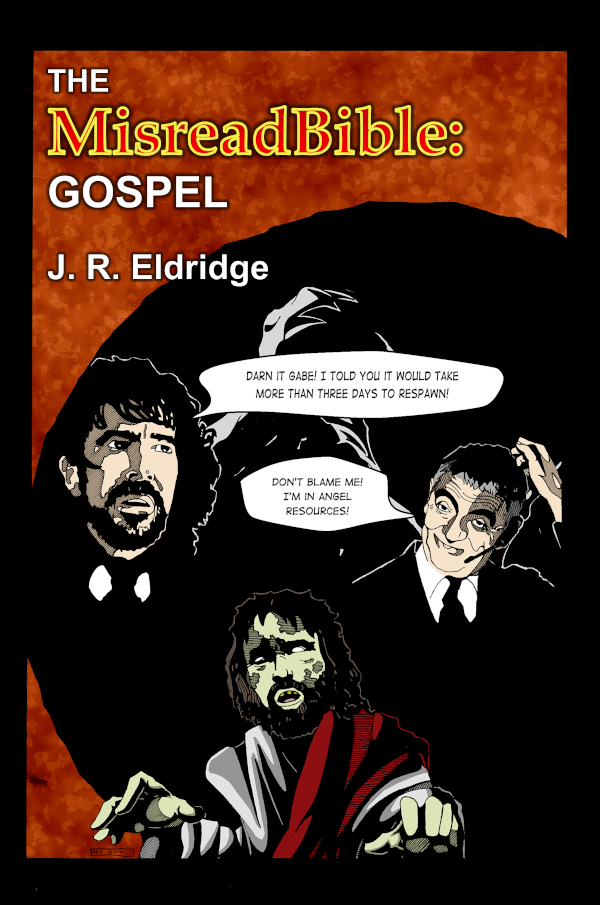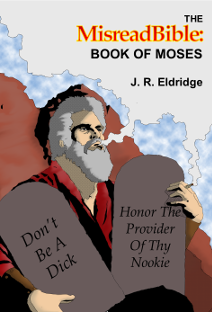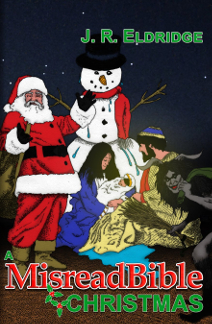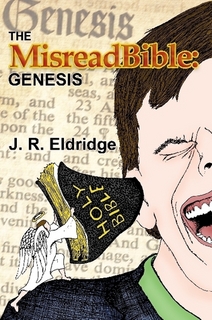Foolish Genealogies
28th May 2022
The Bible is filled with the kind of ‘foolish genealogies’ that ‘Paul’ warned against in Titus 3:9. All those long lists of names punctuated by begats don’t make for particularly fun reading, but they can be quite useful to scholars.
Today, I’ll be discussing two such genealogies: one from Genesis 4, and another from Genesis 5. Both trace the lineage of Adam, but only one of them leads to Noah and the sons who survived the flood with him… Or at least, that’s how it appears in the extant text.
According to the Documentary Hypothesis, the first four books of the Bible are made up of text from three main sources – the Yahwist (J, from the German spelling ‘Jahwist’), the Elohist (E), and the Priestly – edited together by a redactor or redactors. The opening chapters of Genesis, where these genealogies are located, contain material from P and J. The E source comes in later, partway through the story of Abraham, and isn’t relevant to this discussion. Forget about E!
The first creation story (Genesis 1:1-2:3) and the genealogy in Genesis 5 come from P, whereas the Adam and Eve story (Genesis 2:4-4:26), including the genealogy in Genesis 4, comes from J.
Genesis 4 begins by telling us about the birth of Cain and Abel, followed by the story of Cain killing his brother and being banished by God. When Cain goes off to the Land of Nod, there’s a genealogy that traces Adam’s lineage from Cain to Lamech (Genesis 4:17-22): Cain, Enoch, Irad, Mehujael, Methushael, and Lamech. The chapter ends with an addition by the redactor saying that Eve gave birth to a third son called Seth as a replacement for Abel.
Genesis 5 begins (in the KJV), ‘This is the book of the generations of Adam.’ It comes from a source used by P that scholars call the Book of Generations (or Toledoth from the Hebrew word for ‘generations’ תּוֹלְדוֹת). It traces Adam’s lineage via Seth to Noah: Adam, Seth, Enosh, Cainan, Mahalalel, Jared, Enoch, Methuselah, Lamech, and finally, Noah.
Now, the eagle-eyed amongst you may have noticed that the names Enoch and Lamech appear in both lists. That’s not all; there are also names that are very similar, especially in Hebrew. Ignoring Noah and Adam, this is a table of the names that are the same or similar.
| Genesis 4 – Yahwist | Genesis 5 – Priestly | ||
|---|---|---|---|
| Cain | קַיִן (qayin) | Cainan | קֵינָֽן (qenan) |
| Enoch | חֲנוֹךְ (hanok) | Enoch | חֲנוֹךְ (hanok) |
| Irad | עִירָד (`irad) | Jared | יֶרֶד (yered) |
| Mehujael | מְחוּיָאֵל (mehuya’el) | Mahalalel | מַהֲלַלְאֵל (mahalalel) |
| Methushael | מְתוּשָׁאֵל (metusa’el) | Methuselah | מְתוּשֶׁלַח (metuselah) |
| Lamech | לֶמֶךְ (lemek) | Lamech | לֶמֶךְ (lemek) |
Coincidence? Well, possibly, but it does raise questions. For instance, what the hell was the point of tracing Cain’s lineage when its members would have been wiped out by the flood, whereas Seth’s survived via Noah and his sons? If Genesis 4 and 5 come from different sources (J and P, respectively), where did Genesis 4’s genealogy originally lead?
Well, since the last person in J’s genealogy was called Lamech, and the father of Noah in P’s was also called Lamech, perhaps J’s genealogy also originally had Lamech as the father of Noah.
There’s another clue that makes this hypothesis even more plausible. P’s genealogy follows the pattern ‘And X lived so many years, and begat Y: And X lived after he begat Y so many years, and begat sons and daughters: And all the days of X were so many years: and he died’ (with the exception of Enoch who walked with God and was taken). When the birth of Noah is mentioned (Genesis 5:28-30), it says, ‘And Lamech lived an hundred eighty and two years, and begat a son:’ Then it says, ‘And he called his name Noah, saying, “This same shall comfort us concerning our work and toil of our hands, because of the ground which the LORD hath cursed.”’ That doesn’t fit the pattern.
Without delving too deeply into the characteristics of P and J which scholars use to identify each source, the Priestly tends to be more structured and ordered (as seen in its formulaic genealogy) and puts more stress on establishing lineages, whereas the Yahwist is more poetic and uses wordplay. For instance, in J, Adam (אָדָם) is taken from the ground (אֲדָמָה adamah), and then Woman (אִשָּׁה ishah) is taken out of Man (אִישׁ ish). When Jacob is born, he is named Jacob (יַעֲקֹב ya’aqob) because his hand was ‘on the heel’ (בַּעֲקֵב ba’aqeb) of his brother.
In Genesis 5:29, wordplay is employed when Noah’s name is given: ‘He named him Noah (נֹחַ) and said, “He will comfort (נָחַם naham) us…”’, which is how J names people, not P. Also, the verse mentions the ground being cursed, which happens in J, but not P. So, it seems that this Yahwistic text was inserted into the Priestly text at this point by the redactor, which means that it likely comes from the Yahwistic story of Noah being named by his father Lamech, presumably, the same Lamech that J traces Adam’s lineage to.











